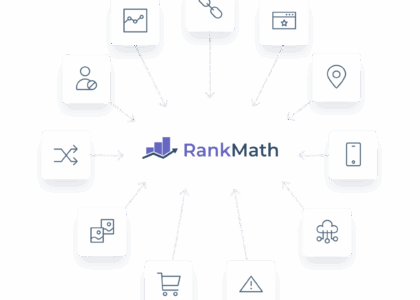The Importance of Competitor Website Analysis
Understanding your competitors is crucial in today’s competitive digital landscape. One effective way to gain insights into their strategies and performance is through competitor website analysis. By evaluating and comparing key aspects of your competitors’ websites, you can identify opportunities for improvement and stay ahead in the market.
Key Benefits of Competitor Website Analysis:
- Identifying Strengths and Weaknesses: By analysing your competitors’ websites, you can uncover what they are doing well and where they may be falling short. This information can help you refine your own strategies and differentiate your brand.
- Understanding Market Trends: Examining competitor websites can provide valuable insights into current market trends, customer preferences, and emerging technologies. This knowledge can guide your decision-making and keep your business relevant.
- Improving User Experience: Analysing how competitors design their websites, structure content, and engage users can inspire enhancements to your own site’s user experience. Creating a seamless and engaging experience for visitors is key to retaining customers.
- Benchmarking Performance: Comparing metrics such as website traffic, conversion rates, and engagement levels with those of competitors can help you set realistic goals and track your progress over time. Benchmarking allows you to measure the effectiveness of your digital marketing efforts.
Tools for Competitor Website Analysis:
There are various tools available to assist in conducting competitor website analysis:
- SEO Tools: Tools like SEMrush, Ahrefs, and Moz allow you to analyse competitors’ SEO strategies, keyword rankings, backlink profiles, and more.
- User Experience Tools: Tools such as Hotjar or Crazy Egg provide insights into user behaviour on competitor websites, helping you identify areas for improvement on your own site.
- Social Media Monitoring Tools: Platforms like Sprout Social or Hootsuite enable you to track competitors’ social media presence, engagement levels, and content performance.
In Conclusion
Competitor website analysis is a valuable practice that can inform your digital marketing strategy, enhance user experience, and drive business growth. By staying informed about what others in your industry are doing online, you can adapt proactively to changes in the market landscape and maintain a competitive edge.
Essential Insights: Mastering Competitor Website Analysis for Business Success
- 1. How can competitor website analysis help my business stay ahead in the market?
- 2. What are the key benefits of conducting competitor website analysis?
- 3. Which tools can I use to perform competitor website analysis effectively?
- 4. How can I identify strengths and weaknesses of my competitors through website analysis?
- 5. What metrics should I focus on when comparing my website performance with that of competitors?
1. How can competitor website analysis help my business stay ahead in the market?
Competitor website analysis can play a crucial role in helping your business stay ahead in the market by providing valuable insights into your competitors’ strategies, strengths, and weaknesses. By understanding what tactics are working well for your competitors and where they may be falling short, you can make informed decisions to refine your own approach and differentiate your brand. This analysis allows you to identify opportunities for improvement, adapt to market trends, enhance user experience, and benchmark your performance against industry standards. Ultimately, competitor website analysis enables you to stay proactive, agile, and competitive in a rapidly evolving digital landscape.
2. What are the key benefits of conducting competitor website analysis?
Conducting competitor website analysis offers a range of key benefits for businesses looking to gain a competitive edge. By examining and comparing competitors’ websites, companies can identify strengths and weaknesses in their own strategies, understand current market trends and customer preferences, improve user experience, and benchmark their performance against industry standards. This practice not only provides valuable insights into competitors’ tactics but also helps businesses refine their digital marketing efforts, enhance customer engagement, and stay ahead in the ever-evolving online landscape.
3. Which tools can I use to perform competitor website analysis effectively?
To perform competitor website analysis effectively, there are several tools available that can provide valuable insights into your competitors’ online strategies and performance. Popular tools such as SEMrush, Ahrefs, and Moz are commonly used for analysing competitors’ SEO strategies, keyword rankings, backlink profiles, and more. Additionally, user experience tools like Hotjar or Crazy Egg can help you understand user behaviour on competitor websites, enabling you to improve your own site’s user experience. Social media monitoring tools such as Sprout Social or Hootsuite can also be utilised to track competitors’ social media presence and engagement levels. By leveraging these tools effectively, you can gain a comprehensive understanding of your competitors’ online activities and make informed decisions to enhance your own digital marketing efforts.
4. How can I identify strengths and weaknesses of my competitors through website analysis?
To identify the strengths and weaknesses of your competitors through website analysis, you can start by examining various aspects of their online presence. Evaluate factors such as website design, user experience, content quality, SEO strategies, social media engagement, and overall performance metrics. By comparing these elements with your own website and digital marketing efforts, you can gain valuable insights into what your competitors are doing well and where they may have gaps or opportunities for improvement. This analysis can help you refine your own strategies, differentiate your brand, and stay competitive in the market.
5. What metrics should I focus on when comparing my website performance with that of competitors?
When comparing your website performance with that of competitors, it is essential to focus on key metrics that provide valuable insights into your digital presence and effectiveness. Some important metrics to consider include website traffic volume, sources of traffic (organic, paid, social), bounce rate, average session duration, conversion rates, keyword rankings in search engines, backlink profile, social media engagement levels, and overall user experience. By analysing these metrics alongside those of your competitors, you can identify areas for improvement, track progress over time, and make informed decisions to enhance your online performance and stay ahead in the competitive landscape.






